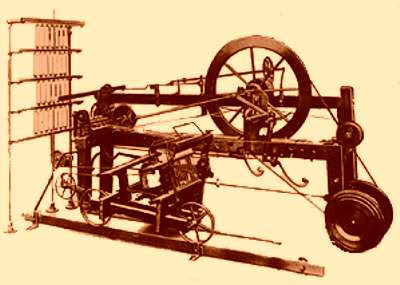Wednesday, February 9, 2011
3.2.1.
Three things I learned:
1. I learned more about how unions work, and what they generated from, which was from the factory workers demanding for a cleaner work environment, less hours, and higher wages. I linked this information to the Union i knew, which works around the city of Williamsport, and understood more of what they do and how they work.
2. I also learned how the Industrial Revolution began, by the farming methods being improved, which then lead to agricultural revolution.
3. Another fact that i learned, was that the Industrial Revolution created the middle class in society, by this revolution bringing in money into the countries and a social class of skilled workers, professionals, business people, and wealthy farmers who formed the middle class.
Two things i found interesting:
1. I found the child labor in the 1800's very interesting when i compared them to todays day and age where no person is allowed to have a legitimate job until they are sixteen years of age.
2. I found it interesting also what the long-term effects of the Industrial Revolution are still influencing us today. For example most people today in those industrialized countries can afford those consumer goods which were actually luxuries around fifty to hundred years ago
One question I still have:
1. How come the Industrial Revolution did not start in the United States but in Great Britain?
Connection Across Time
Reform Today
Progressivism
Progressivism came about from the dramatic changes to modernization. For example the change in growth of large corporations and railroads, and also fears of corruption in American politics. In today's 21st century some concepts that arose from this reform are environmentalism and social justice. Basically this reform is issues and also ideas, from modernization we are going through in American Society. One example of where this reform exists today, is in training programs for welfare and charity work, ensuring that trained professionals are taking these jobs, which is more assuring to our society.
Reform
Unionization
Factory workers at this time was faced with long hours, filthy and dangerous working conditions, and the threat of being laid off. Workers then started joining together in voluntary associations, which were called unions. These unions would bargain for better working conditions and also to get paid more, this was called collective bargaining. However, if their bosses refused these demands, union members would strike. Striking was when the workers refused to work.
In my opinion i believe Unionization is a good thing. I think it's good if the people stand up for themselves and how they are treated in their working environments. I think if you are not receiving the respect you deserve where you work, you need to voice that, and if you are refused by your boss, you and anyone else should have the right to strike.
Monday, February 7, 2011
Connection across time
This current invention was invented by Scottish researchers. This is a packaging for food that changes color to identify when your food is going bad. Its packaging is explained as a smart plastic film. These researchers wanted to produce the risk of people eating bad food and also to prevent the waste of food.
The Spinning Mule
Invented by Samuel Crompton in 1779
This invention combined the features of the spinning jenny and the water frame. It produced thread that was stronger, finer, and more consistent then what the earlier spinning machines produced. This allowed greater and better control over the weaving process.
Industrial Revolution Invention
The Flying Shuttle
Invented by John Kay in 1733
This shuttle sped back and forth on wheels speedily carrying threads of yarn back and forth when the handle was pulled by the weaver. This invention greatly increased the productivity of weavers by doubling the work they could complete in a day.
Sunday, February 6, 2011
Invention of the Industrial Revolution
The Seed Drill
The seed drill was invented around 1701 by a scientfic farmer, named Jethro Tull. The seed drill allowed farmers to sow seeds into the ground at specific depths and also in well-spaced rows. This took care of the problem of seeds being wasted by them scattered all over the ground and failing to take root. Now however, thanks to the seed drill, seeds grew into larger shares boosting crop yeilds.
Friday, February 4, 2011
Introduction
Chapter 9
The Industrial Revolution
1700-1900
In England during the 18th century, machines began rapidly replacing hand labor in producing goods. This era where factorys were growing very quickly is known as the Industrial Revolution. The Industrial Revolution did not only take place where it started in England but soon spread to Continental Europe and North America.
What I hope to accomplish through this blog about chapter 9, is a better understanding of how the Industrial Revolution began. I also would like to learn more of the inventions and advances in technology that were brought about during this era, and accomplish the reasoning to how this era of Industrialization connects to all of us in today's modern world.
Subscribe to:
Comments (Atom)

